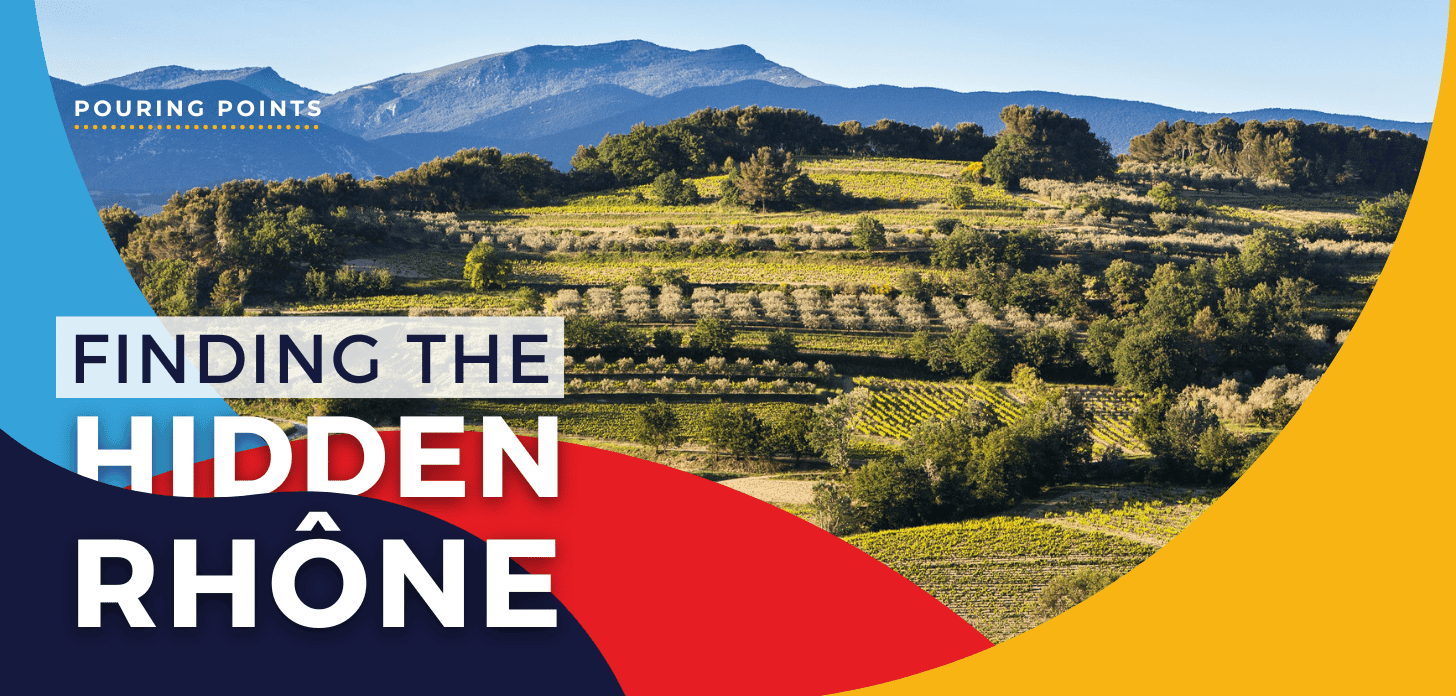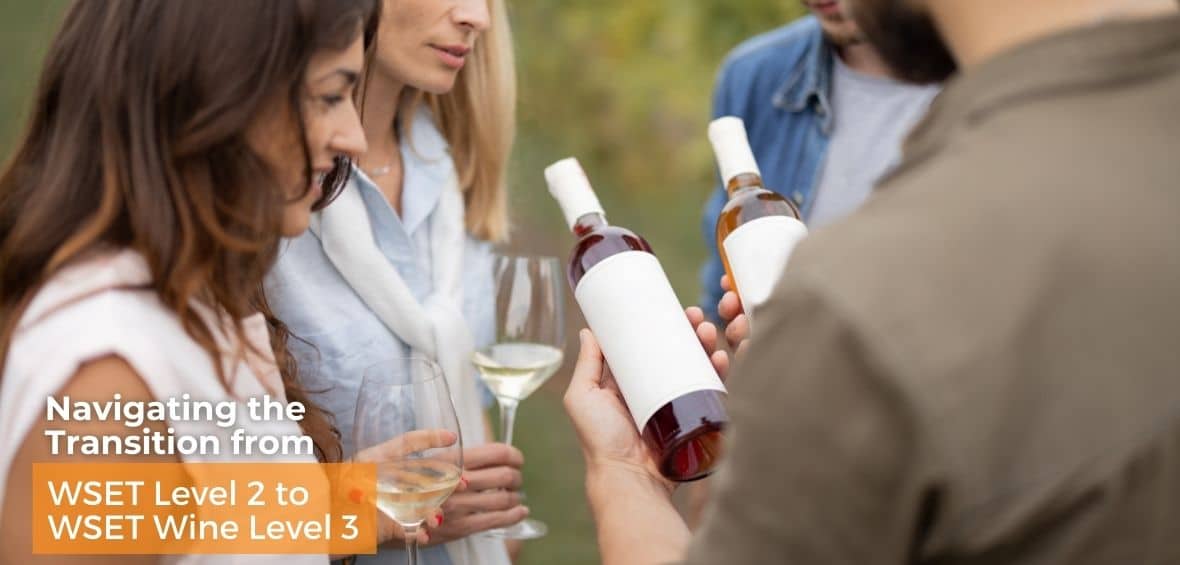by Joe Roberts
A closer look at some of the more intriguing Villages added to NVWA’s Côtes du Rhône online course
If you’re anything like me (a carbon-based life-from consisting mostly of water who happens to have an insatiable infatuation with all things wine-related), chances are you’ve imbibed a fair share of tasty Côtes du Rhône wines without actually thinking much about the details of the Côtes du Rhône appellation itself.
I can assure you, however, that wine certification programs are thinking about the Côtes du Rhône’s details because it is without a doubt one of the most important production areas in all of France. Sometimes relying on a “by-the-numbers” overview can feel a little cheesy, but in the case of the Rhone valley vineyards (CDR/CDRV represent 60% of the Rhone production) is the second largest AOC vineyard in France.
The modern Côtes du Rhône and Côtes du Rhône Villages cover 22 sub-appellations, growing more than 20 grape varieties, across 170 communes, and covering over 140 miles of land. The Côtes du Rhône AOC has over 96,000 acres under vine, churning out more than 42 million gallons (88% of that being red wine) from nearly 800 wineries, selling over 200 million bottles annually across the globe. That alone makes it one of the more important wine production areas of France, and we haven’t even gotten into the region’s rich history yet.
An AOC since 1933, Côtes du Rhône’s winegrowing history dates back at least to the fourth century BC, when the colonizing Greeks planted vines because, well, that’s just what the Greeks did when they colonized. Findings of archeological remains such as earthenware jars prove that the vineyards of the Côtes du Rhône are among some of the very oldest on the planet. Influenced by a prime location near the Rhône River (as well as the Massif Central, the Alps, and the Mediterranean Sea), and the famous winds that blow through the region, it’s always been a haven for high-quality wine grapes, especially red ones. The bottom line: Côtes du Rhône is an important part of the wine production landscape in France, and by extension, an important part of the wine production landscape of the entire world.
Napa Valley Wine Academy has you covered when it comes to CdR, offering the first (and only official) course on the wines of Côtes du Rhône. They’ve recently added five of Côtes du Rhône Villages’ twenty-two named villages (all of which have stricter production standards and lower yield requirements) to that course, making it an even more detailed and robust learning experience. The five villages now featured in the course are among the region’s most interesting for wine lovers:
- Gadagne—The Outlier, an all-red appellation that you can think of as Châteauneuf-du-Pape on a budget (more on that in a minute or two)
- Sablet—The Unconquerable, a neighbor of the more famous Gigondas, replete with a very colorful history
- Nyons—The New Kid on the Block, having been officially designated just recently in 2020
- Signarges—The Pinch-Hitter, a hot and dry area spread over the communes of Domazan, Estézargues, Rochefort du Gard and Saze. Heavy Mistral winds influence vineyards suffused with large rounded cobbles over sand and marl, producing only red wines.
- Visan—The Northerner, with a slightly cooler Mediterranean climate that’s a bit more like that found in the Northern Rhône.
Ready for a closer look at some of those five intriguing areas? Of course, you are, you thirsty scholar, you!
Gadagne
This one’s a true outlier, being the most southern of the Côtes du Rhône Villages, and encompassing plantings in the communes of Vedène, Châteauneuf-de-Gadagne, Saint-Saturnin-lès-Avignon, Caumont-sur-Durance, and Morières-lès-Avignon. In fact, just a quick glance at a map shows that Gadagne is a lone wolf in comparison to the other Côtes du Rhône Villages—its closest neighbor is actually Châteauneuf-du-Pape, with which it shares the influence of the powerful Mistral wind. It also has similarly hot summer months as Châteauneuf-du-Pape, and shares CdP’s vineyard soils (those being covered with large galets stones, which retain and then reflect heat onto the vines). As of the time of this writing, only red wines can be bottled under the Gadagne designation. Consider this area a spot for CdP-like reds, but on a budget.
Sablet
Sablet sits near the town of Orange, west of Mont Ventoux at the foot of Provence’s Dentelles de Montmirail. The oldest part of this ancient village sits behind a walled area (“les remparts”), with streets named after the activities of the village’s residents in ancient times. Speaking of walls, they aren’t just for show; they were built to keep out the many invading factions that had tried to occupy Sablet since the ninth century. Few actually succeeded, and sturdy Sablet was eventually owned by the Holy See, rather than falling under the control of a feudal lord (the area lacks the castles of its neighboring villages for that same reason). Tellingly, even the 1700s plague failed to take down Sablet. It has a Mediterranean climate and well-draining, sandy soils, which it shares with its more famous neighbor, Gigondas. Like neighboring Gigondas, Grenache, Syrah, and Mourvèdre all do very well in Sablet.
Visan
Visan is one of the more northerly villages in the Côtes du Rhône (and was once part of the 14th century Papal Enclave established when Pope Clement V relocated to nearby Avignon). While it makes white and rosé wines, reds account for the vast majority of Visan’s wine production. Its plantings of just over 1,000 acres are mostly on rocky soils that (thanks to very old glacial activity in the area) benefit from a high degree of limestone (arguably adding elegance to Visan’s wines). Those soils are also well-draining, promoting deep vine root penetration (arguably adding complexity and concentration). It’s the cooler Mistral winds that prevail here, since Visan has almost no natural protection from them. Combined with its more northerly locale, the cooler winds help give Grenache and Mourvèdre a lengthy ripening curve, while also affording Visan’s Syrah grapes with the aromatic finesse more often associated with Northern Rhône reds.
All of this is just a very, very small taste of the deep dive provided by these latest additions to Napa Valley Wine Academy’s online Côtes du Rhône course. The curious wine scholars among you will definitely want to enroll to get the full details on the five village designations added to the course (and on the Côtes du Rhône in general)—and, like me, maybe finally give CdR its requisite due.














